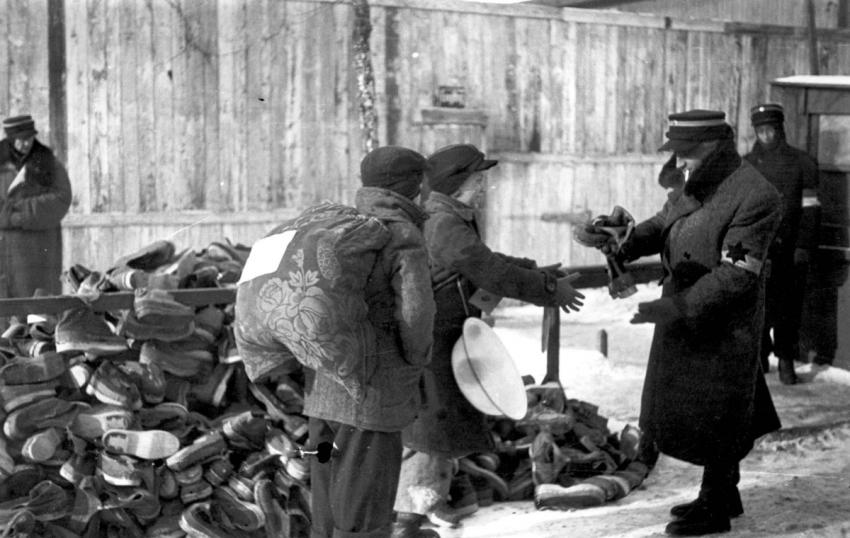Before World War II, Lodz was the second largest city in Poland. Almost a quarter of a million Jews lived there, about one third of the population. Many made a living in crafts and industry, especially in textiles.
The Germans occupied Lodz on 8 September 1939, and immediately set about destroying the economic, social and religious life of the Jewish community. Many of the city's synagogues were torched, and the Jews were ordered to wear an identifying mark on their clothes.
Lodz was annexed to the Third Reich, and tens of thousands of Jews were evicted eastwards, to the Generalegouvernement, the German-ruled area of occupied Poland. When the Lodz ghetto was sealed, there were some 170,000 Jews remaining there, to whom were added tens of thousands of Jews from the district, other Jews from the Reich, and also 5,000 Sinti and Roma. 8-10 people lived in each room and suffered from hunger, cold and disease. In 1942 alone, 18,000 Jews perished in the ghetto as a result of the harsh conditions. In the four years of the ghetto's existence, some 44,000 people died in this way.
Hans Frank, the ruler of the Generalegouvernement, refused to take in more Jews. As a result, Hans Biebow, the head of the Lodz ghetto administration, decided to open new factories in the ghetto, which would mainly manufacture products for the German war effort. The ghetto inmates saw this work as a way to make a living, and from early 1942, when the deportations started, as a way to survive, since those who did not work were deported to the extermination camps. More than 100 factories operated in the ghetto, initially employing old people, women and children. The number of workers increased when the deportations started, and by the ghetto's liquidation in August 1944, 90 percent of the ghetto's Jews worked in these factories.
In January 1942, some 10,000 Jews were deported from the ghetto to the Chelmno extermination camp. The deportations continued until May of that year, by which time, 55,000 Jews had been deported to Chelmno, mostly those who were unable to work, such as geriatrics, babies, young children, the sick and the feeble.
The "Spere" Aktion was carried out in September 1942. The Germans, accompanied by Jewish policemen, went from door to door and forcibly evicted old and sick people, and children under the age of ten. More than 15,000 people were deported to Chelmno in this Aktion; barely a single family escaped unscathed. In the course of 1942, over 70,000 Jews were deported to the Chelmno extermination camp.
In 1943, the SS ordered the liquidation of the Lodz ghetto. Biebow and Arther Greiser, the Nazi leader of the Warthegau region in which Lodz was located, protested the liquidation order, due to the financial benefits the ghetto offered. In June 1944, Chelmno restarted operations, and by mid-June, over 7,000 Jews had been murdered there. Due to the approach of the Red Army and Chelmno's limited extermination facilities, the Germans redirected the deportations to Auschwitz in August, and deported over 67,000 Jews there from the Lodz ghetto. After the last deportation and the ghetto's liquidation, some 1,000 Jews remained there to sort through the deportees' belongings for shipment to Germany. They were liberated by the Red Army on 19 January 1945.
Of the 204,800 Jews who passed through the Lodz ghetto during the four years of its existence, just 7,000-10,000 Jews survived in different camps and in the ghetto itself.







